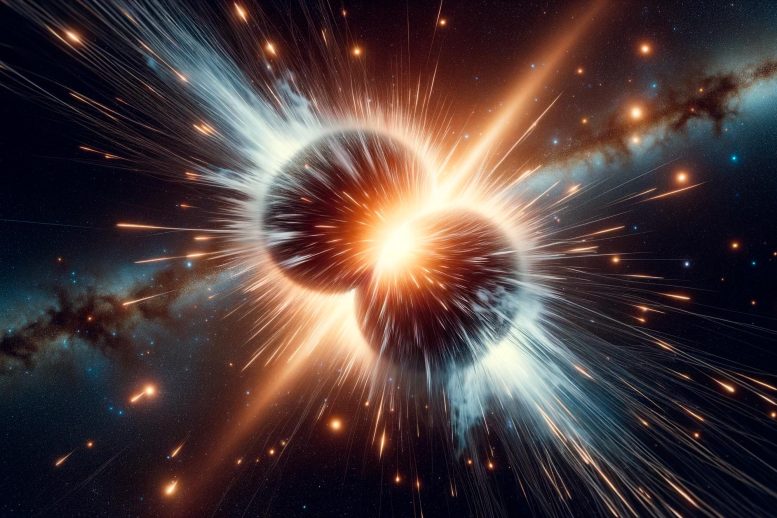
By U.S. Department of Energy October 1, 2024
Collected at: https://scitechdaily.com/neutron-star-collisions-unmasking-the-ghosts-of-gravity/
Scientists are using advanced simulations to explore the aftermath of neutron star collisions, where remnants might form and avoid collapsing into black holes.
This research not only sheds light on the dynamics and cooling of these remnants through neutrino emissions but also provides crucial insights into the behavior of nuclear matter under extreme conditions. The findings contribute to our understanding of astronomical events and the conditions that may or may not lead to black hole formation.
Mysterious Aftermath of Neutron Star Collisions
In the aftermath of a collision of neutron stars, a new celestial object called a remnant emerges, shrouded in mystery. Scientists are still unraveling its secrets, including whether it collapses into a black hole and how quickly this might happen.
Through advanced supercomputer simulations, scientists have delved into the internal structure of these remnants and explored their cooling process, primarily through neutrino emissions. These findings reveal a central object surrounded by a rapidly rotating ring of hot matter. If these remnants avoid collapse, scientists expect that they release the majority of their internal energy within seconds of when they form.

Exploring the Evolution of Neutron Stars
By observing when neutron stars merge in space, scientists gain insights into how nuclear matter behaves under extreme conditions that cannot be replicated on Earth. Nuclear matter is a hypothetical substance made up of protons and neutrons held together by the strong force. Of particular interest to scientists is whether the pressure from the strong force can stop black holes from forming.
In this study, scientists focused on what happens after neutron stars merge but don’t become black holes. The research explored neutron stars’ early evolution, just moments after they were created. This research is a starting point for identifying the astronomical signals that could help answer questions about neutron stars and black hole formation.
Advanced Simulations Reveal Neutron Star Dynamics
Scientists at Pennsylvania State University have used supercomputer simulations with general-relativistic neutrino-radiation hydrodynamics to understand the internal structure of neutron star merger remnants. They also studied how the remnant cools down by emitting neutrinos.
This work used the computational resources available through the Department of Energy’s National Energy Research Scientific Computing Center, the Leibniz Supercomputing Centre in (Germany), and the Institute for Computational and Data Science at Pennsylvania State University.
Unique Cooling Properties of Neutron Star Remnants
The research found that neutron star merger remnants consist of a central object endowed with most of the mass of the system, surrounded by a ring of hot matter in fast rotation that contains a small fraction of the mass but a large fraction of the angular momentum. Unlike most stars, the inner remnant has a higher temperature on its surface than in its core, so convective plumes are not expected to form as the remnant cools down by emitting neutrinos.
Reference: “Ab-initio General-relativistic Neutrino-radiation Hydrodynamics Simulations of Long-lived Neutron Star Merger Remnants to Neutrino Cooling Timescales” by David Radice and Sebastiano Bernuzzi, 5 December 2023, The Astrophysical Journal.
DOI: 10.3847/1538-4357/ad0235
This research was primarily funded by the Department of Energy Office of Science, Nuclear Physics program. Additional funding was provided by the National Science Foundation and the European Union.

Leave a Reply